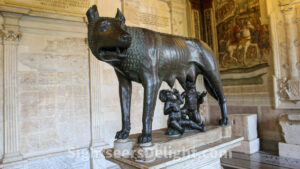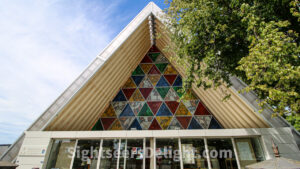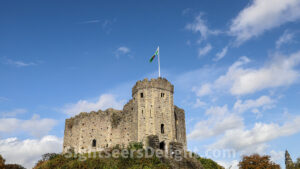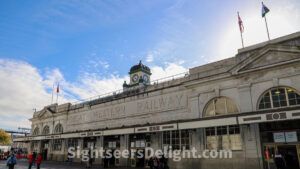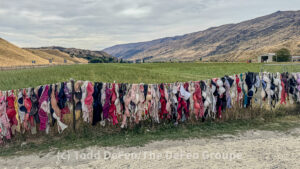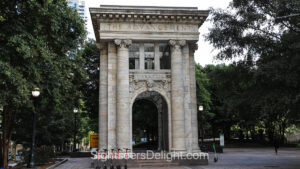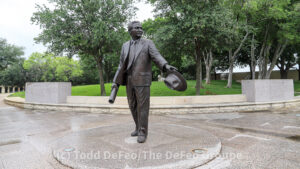
Guidebooks are annoying. Just because some editor who doesn’t know me tells me which restaurant is the best or what attraction is a must-see doesn’t make it a must-see attraction. Sightseers’ Delight is dedicated to the weird, the quirky and the fun. After all, traveling is fun.
If it’s not, you’re doing it wrong.
All of the places highlighted in this ever-growing database are great. Sightseers’ Delight has visited them all. We think you should make a point to see every one of them. But, this is not a guidebook. Just a webpage to help you plan your next adventure.
The U.S. Lighthouse Service dedicated Cape Neddick Light Station on Nubble Island in 1879; the light house remains in use to today. Plans for a light house date to 1837, but it wasn’t until 1874 when Congress appropriated $15,000 to build a light station that work on Cape Neddick Light began.
The Capitoline Museums are located on the Piazza del Campidoglio atop of Capitoline Hill in the heart of Rome. Pope Clement XII opened the museums to the public in 1734. The museum’s stunning collection includes the Ancient Roman Dying Gaul (also known as the Dying Galatian) statue, the bronze statue of the Capitoline Wolf nursing Romulus and Remus and the original equestrian statue of Marcus Aurelius that once stood in Piazza del Campidoglio.
After the 2011 Christchurch earthquake heavily damaged the Christchurch Cathedral, Japanese architect Shigeru Ban designed the Cardboard Cathedral pro bono to serve as a transitional cathedral. The Cardboard Cathedral, part of the Anglican Diocese of Christchurch, opened in August 2013. The A-frame in style structure rises 79 feet tall and uses 86 cardboard tubes sitting on top of 20-foot-long shipping containers. Despite its controversial design, the transitional cathedral is a popular destination for tourists to the city. The Anglican Diocese built the structure on the site of St John the Baptist Church, the first church built in permanent materials by Anglicans in Christchurch. The 2011 earthquake destroyed the church.
Cardiff Castle is a medieval castle and Victorian Gothic revival mansion in the center of Cardiff, Wales. Norman invaders built the original motte and bailey castle in the late 11th century on top of a 3rd-century Roman fort. During the mid-18th century, ownership of Cardiff Castle passed to the Stuart dynasty, specifically the Marquesses of Bute. John, 1st Marquess of Bute, employed Capability Brown and Henry Holland to redo the main range, turning it into a Georgian mansion. In addition to that, the castle grounds were landscaped, and numerous older medieval buildings and walls were demolished.
Cardiff Central Railway Station (Caerdydd Canolog in Welsh) is a significant station situated in the capital of Wales, Cardiff, on the South Wales Main Line. It serves as one of the city’s two primary urban rail network hubs, along with Cardiff Queen Street. The station was established in 1850 as Cardiff Station, later renamed to Cardiff General in 1924, and finally to Cardiff Central in 1973. Wales’s largest and busiest station is one of twenty railway stations in the city and one of two in the city center. Transport for Wales Rail manages the Grade II listed building.
The Cardrona Bra Fence in Central Otago, New Zealand, is a quirky and controversial tourist “attraction.” The “attraction” dates to sometime between Christmas 1998 and New Year 1999. Apparently, passers-by began attaching bras to a rural fence near the Cardrona Distillery. The original reason for doing so remains unknown, but the number of bras quickly grew, reaching hundreds. By early 2006, about 800 bras adorned the fence, drawing attention from far-away media sources. Although popular with visitors, the fence has sparked debate over its value as an attraction.
The Carnegie Education Pavilion, often called the Carnegie Monument, is a marble Beaux-Arts monument built in 1996 using the exterior facade of the Carnegie Library. From 1899 to 1901, steel magnate Andrew Carnegie donated $145,000 to build and supply a new public library in Atlanta at 126 Carnegie Way. New York architects Ackerman and Ross built the library, which opened in 1902. It was renovated in 1950 and 1966. The central library remained until it was demolished in 1977 to make way for the Marcel Breuer-designed Central Library.
30308
19106
The house of John Luther “Casey” Jones is today a museum. Although it has been moved from its original location, it is open to the public and features a wide array of exhibits, including railroad memorabilia and Jones’ personal effects. A life-sized replica of Illinois Central engine No. 382, the locomotive Jones was engineering on his last trip, sits behind Jones’ house. The actual locomotive was repaired after the wreck and ran for 35 years before being scrapped.
38305

